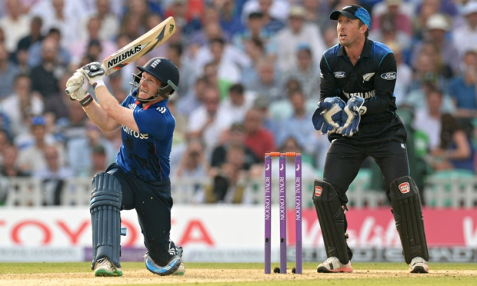ODI Inflation
1Remember when people used to complain about that Accumulation Phase in ODIs? Those middle overs when batsmen would nurdle five singles an over when patting it down to long-on and long-off with the odd run down to Third Man to provide variation.
Well it would appear those days are gone, and batting sides are going for it for all 50 overs. And now people have something else to complain about.
ODI scores have been inflating for a few years now. The change was led by India and Sri Lanka on friendly pitches as well as Australia. New Zealand has adopted the policy over the last six months, and now England are getting on the bandwagon. And when England is involved you know it is official.
ODI cricket 2015. When 400 is the new 300, 320 is the new 250 and people don’t know what to do. Something must be done.
As it happens the best ODI over this period was the New Zealand v Australia pool match at Eden Park in the recently completed World Cup. 150 played 151/9 and the tension was there from start to finish. Yet that match was also played at a modern pace; it lasted for 55 overs. It also happened to feature two of the best performances from left arm seamers.
Led by International Celebrity Shane Warne, there has been a range of ideas floated around in the past week in how to redress the balance between bat and ball. Reviewing these:
Change the size of the ball:
Get out of here Shane; you’re drunk.
Remove field restrictions altogether:
…And have nine fielders on the fence. What a disaster that would be.
You can not tweak the game of cricket, the answer lies in the Terms & Conditions of ODIs.
Remove the Batting Powerplay
This would seem to be the simplest way to redress the balance. Watching bowlers battling away with an old ball and huge gaps in the outfield can be a brutal watch, and this aspect alone means that should be considered. However it is surprisingly counterproductive on regular occasions; the World Cup Final being the obvious example.
Get rid of the need for a fifth bowler
Increase the maximum number of overs per bowler from 10 to 13, so that a side’s best bowlers get more of an opportunity. This one seems to be gathering some traction.
This goes against a long-term ideological basis of ODI cricket; the encouragement of all-rounders. The Five-bowler rule has been around since its inception, and was also adopted by T20 cricket. Changing this rule would also remove one of the great tactical challenges facing captains, and the different approaches used.
It would have its own risks too; allowing a side to play six specialist batsmen seems an interesting way of reducing runs scored.
New Ball at 30
There has been talk of removing the two-ball approach, and instead have a second new ball at around the 30 over mark. It is hard to know what effect, if any, this would have. It would have the advantage of the bowling side being given another opportunity. But a new ball when two batsmen are set could be interesting.
Put the boundary ropes back to where they belong
Yes. Although this is not as a reaction to ODIs 2015; this encroachment has been annoying people for years. And they can leave them there for test matches too.
At least nobody is talking about bringing back the Super Sub.


[…] There’s talk of changing the ball, the ropes, the bats and the power play format, but cricket is notoriously slow to change its rules (which is a good thing when compared to Rugby, who are always up for a touch, pause, shambles). sportreview.net.nz suspects future re-balancing of bat v ball will come from bowlers, captains and coaches working out new plans or groundsmen having mercy. I wouldn’t hold my breath for ICC leadership or indeed action on this. […]